Balcony gardening has become a popular way to bring greenery into urban spaces. Even if you don’t have a backyard, a small balcony can be transformed into a lush, productive, and visually appealing garden. Balcony gardens are perfect for growing flowers, herbs, vegetables, and even small fruiting plants while maximizing limited space.
Starting from scratch might seem daunting, but with careful planning, the right tools, and smart plant selection, you can create a thriving balcony garden. This guide will walk you through how to start a balcony garden from scratch, covering everything from design and container selection to soil, watering, and maintenance.
Step 1: Assess Your Space and Conditions
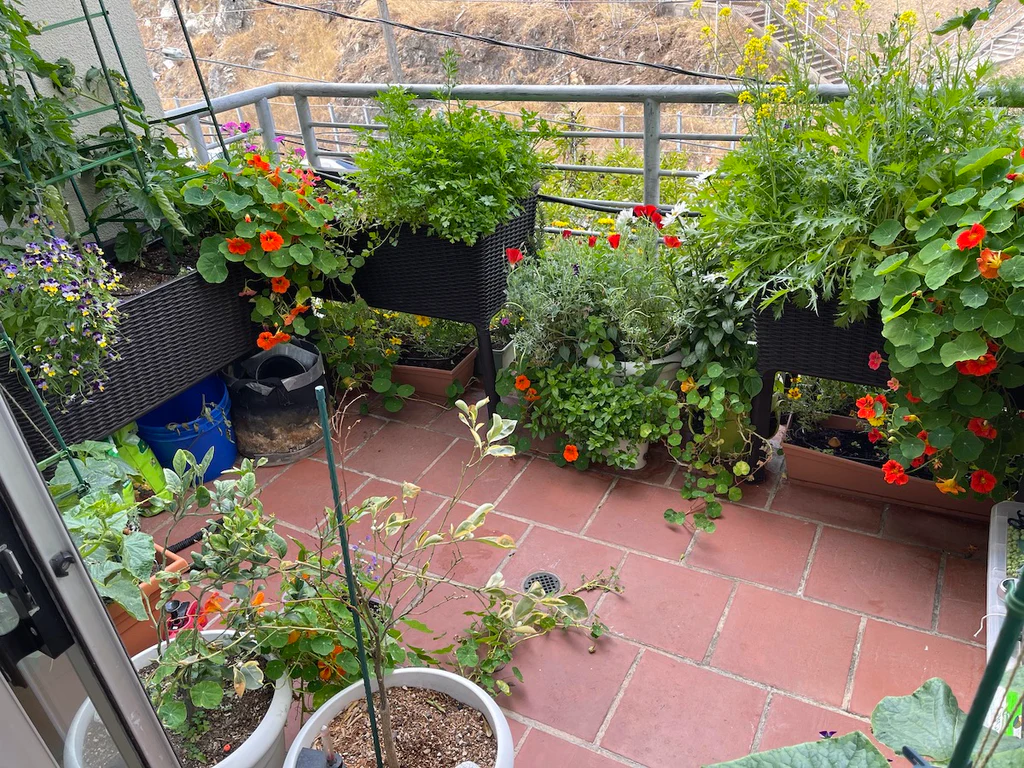
Before planting, it’s essential to understand your balcony’s environmental conditions:
- Sunlight: Determine how many hours of sunlight your balcony receives.
- Full Sun: 6+ hours of direct sunlight; ideal for vegetables and sun-loving flowers.
- Partial Sun: 3–6 hours of sunlight; suited for leafy greens, herbs, and shade-tolerant plants.
- Shade: Less than 3 hours of direct sunlight; best for ferns, ivy, and certain flowering plants.
- Weight Limitations: Check the balcony’s load-bearing capacity. Heavy soil and pots can add significant weight.
- Wind and Exposure: Balconies are often windy; windbreaks or plant positioning can protect delicate plants.
Tip: Observe your balcony at different times of day to see which areas are sunny, shaded, or sheltered from wind.
Step 2: Plan Your Balcony Garden Layout
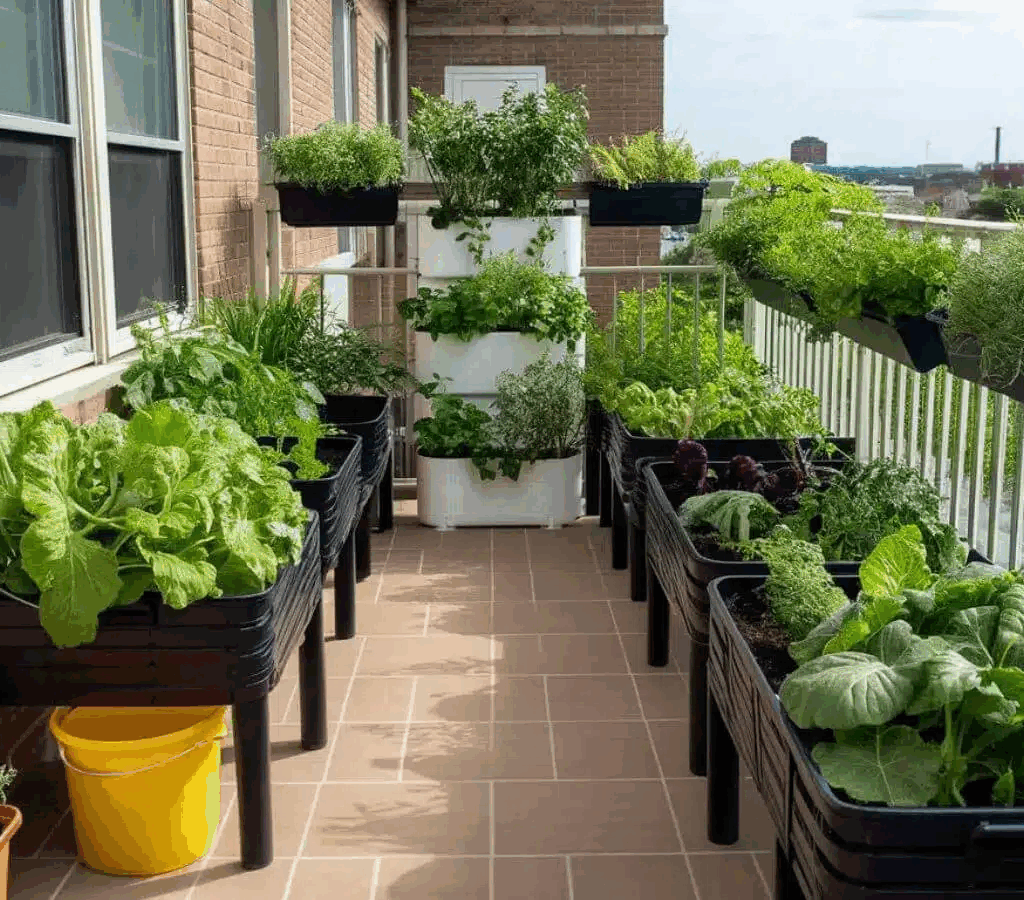
A clear plan helps maximize space and accessibility:
- Vertical Gardening: Use wall-mounted planters, hanging baskets, and trellises to save floor space.
- Tiered Stands: Multi-level plant stands allow you to fit more plants in a compact area.
- Rail Planters: Attach planters to the balcony railing for extra planting space.
- Containers: Arrange pots in clusters for visual appeal while allowing for growth.
Tip: Sketch a layout including plant types, sunlight needs, and water access for better organization.
Step 3: Choose the Right Containers
Selecting the right containers is crucial for plant health and growth:
- Material Options:
- Plastic Pots: Lightweight, affordable, and retain moisture well.
- Terracotta Pots: Porous, allow aeration, but dry out faster.
- Fabric Grow Bags: Promote healthy root growth and drainage.
- Wooden Boxes: Aesthetic, can hold larger plants, but may need lining to prevent rot.
- Size Considerations:
- Choose pots large enough for roots to grow freely.
- For vegetables, deeper pots are needed for root development (8–12 inches minimum).
- Drainage:
- Ensure containers have drainage holes to prevent waterlogging.
- Use saucers to catch excess water and protect balcony flooring.
Tip: Mix and match container types for visual appeal and functionality.
Step 4: Select the Right Plants
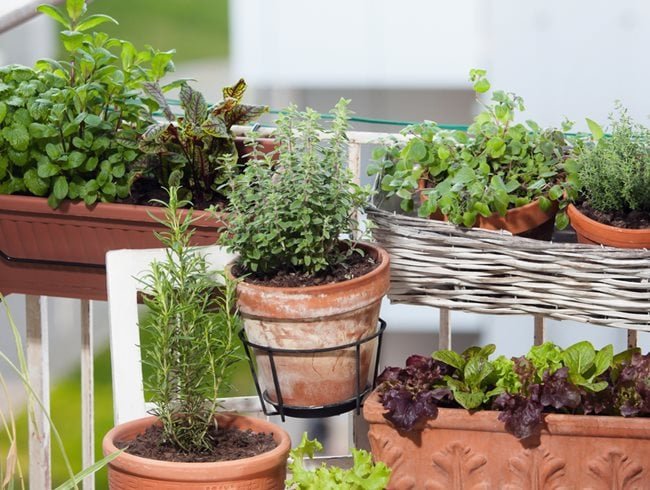
Balcony gardens are ideal for flowers, herbs, vegetables, and small fruiting plants:
Herbs
- Basil, mint, rosemary, thyme, coriander, and chives.
- Require moderate sunlight and well-draining soil.
Vegetables
- Leafy greens like spinach, lettuce, and kale.
- Tomatoes, peppers, radishes, and dwarf beans can thrive in large containers.
Flowers
- Marigolds, petunias, pansies, geraniums, and impatiens.
- Adds color and attracts pollinators if grown outdoors.
Small Fruit Plants
- Strawberries, dwarf citrus trees, and cherry tomatoes.
- Require more sunlight and larger pots for root space.
Tip: Start with easy-to-grow plants suited to your balcony’s light conditions. You can expand variety as you gain experience.
Step 5: Choose the Right Soil
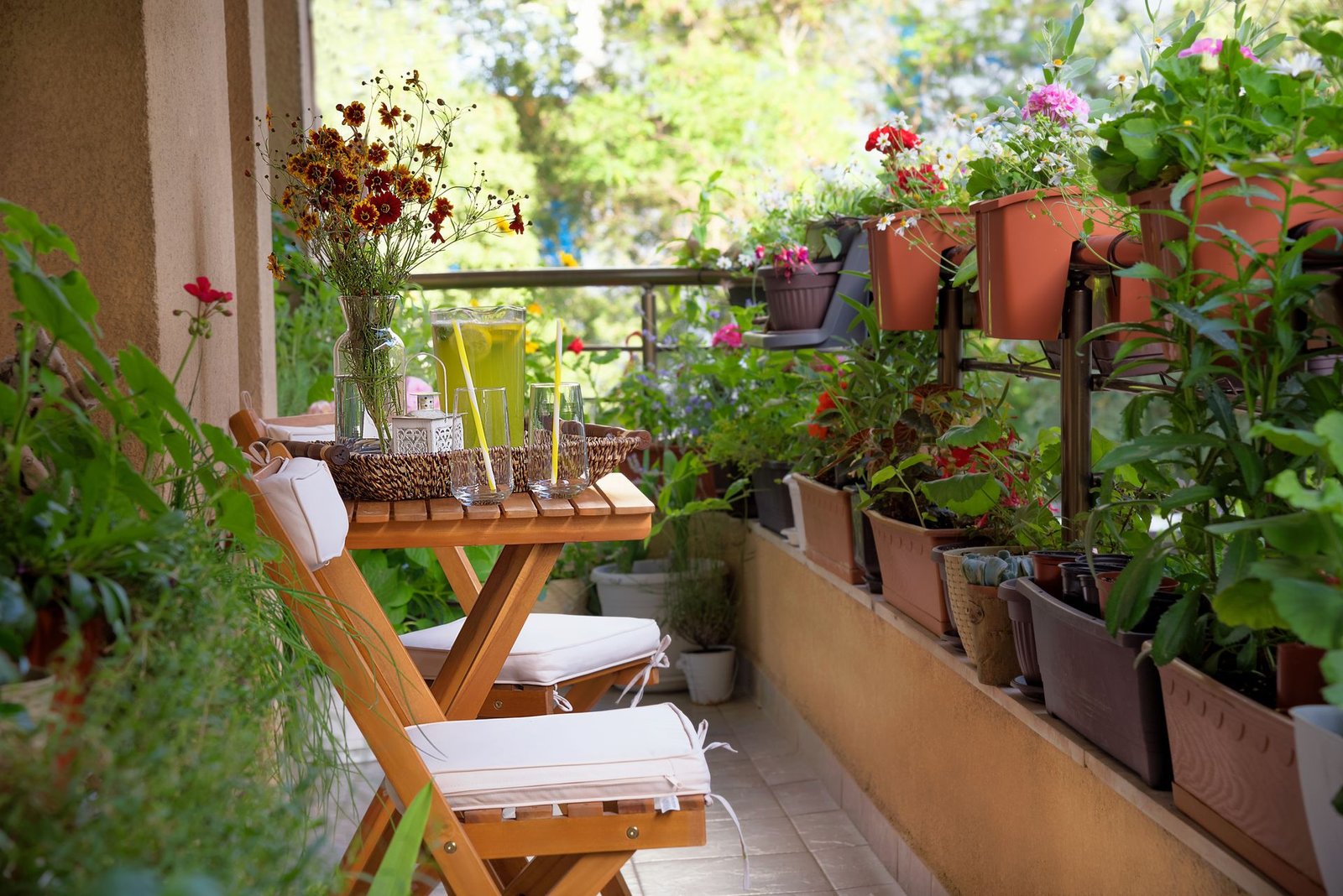
Using the correct soil mix ensures healthy growth:
- Potting Mix: Lightweight, well-draining, and nutrient-rich; perfect for containers.
- Compost: Adds nutrients and improves soil structure.
- Perlite or Vermiculite: Improves aeration and drainage, preventing root rot.
Tip: Avoid using garden soil alone, as it can compact in pots and harbor pests or diseases.
Step 6: Planting Your Balcony Garden
- Fill containers with soil mix, leaving 1–2 inches from the rim.
- Place seedlings or seeds according to recommended spacing.
- Gently press soil around roots and water thoroughly.
- Add mulch to retain moisture and reduce evaporation.
Tip: Start with small plants or seedlings for quicker results, especially if you’re new to gardening.
Step 7: Watering and Fertilization
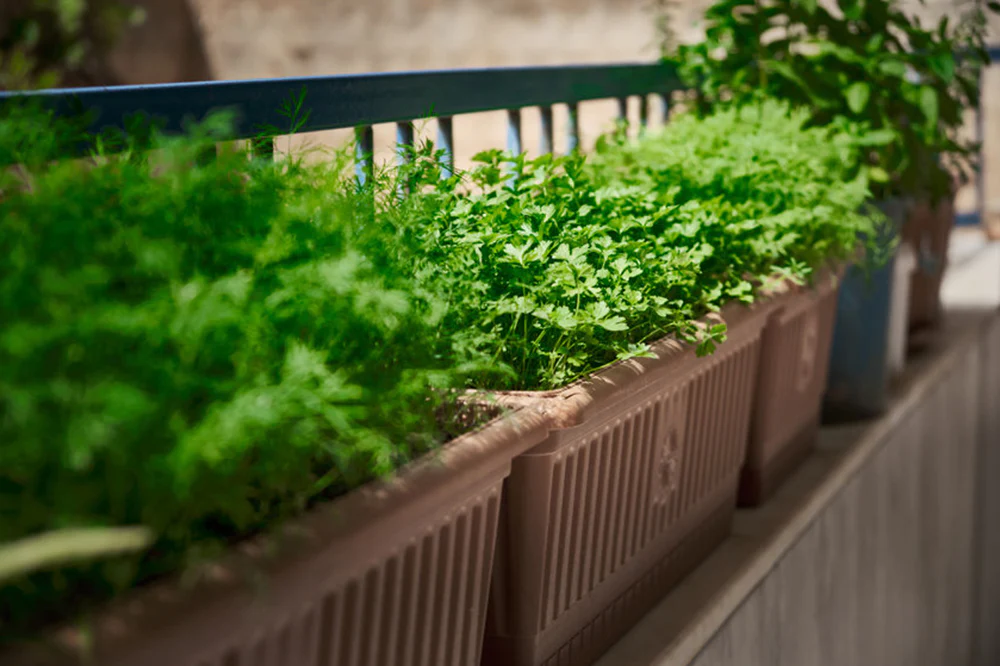
Watering
- Container plants dry out faster than in-ground plants.
- Water when the top inch of soil feels dry.
- Water at the base, avoiding wetting leaves to prevent fungal diseases.
Fertilization
- Use organic fertilizers like compost, worm castings, or liquid seaweed extract.
- Feed vegetables and flowering plants every 2–3 weeks during the growing season.
Tip: Self-watering containers or drip irrigation can save time and maintain consistent moisture.
Step 8: Sunlight and Positioning
- Rotate containers periodically for even growth.
- Place sun-loving plants where they receive maximum sunlight.
- Shade-tolerant plants can fill corners or lower levels of tiered stands.
Tip: Use reflective surfaces (mirrors or light-colored walls) to increase sunlight exposure in shaded areas.
Step 9: Pest and Disease Management
Even balcony gardens are susceptible to pests and diseases:
- Common Pests: Aphids, whiteflies, spider mites, and snails.
- Organic Pest Control: Neem oil, insecticidal soap, or manual removal.
- Disease Prevention: Avoid overwatering, ensure good air circulation, and remove diseased leaves promptly.
Tip: Companion planting (e.g., marigolds with tomatoes) can naturally deter pests.
Step 10: Maintenance Tips
- Pruning and Pinching: Remove dead leaves and prune overcrowded growth for better air circulation.
- Support Plants: Use stakes, trellises, or cages for vining plants like tomatoes or beans.
- Regular Observation: Check plants daily for pests, nutrient deficiencies, or water stress.
- Seasonal Adjustments: Move containers or use shade cloth in extreme heat; protect from frost in winter.
Tip: Keep a small gardening journal to track watering, fertilization, and growth progress.
Step 11: Creative Enhancements
- Vertical Walls: Add trellis walls with climbers like ivy or beans for privacy and greenery.
- Hanging Planters: Ideal for trailing flowers or herbs to save floor space.
- Decorative Pots: Use colorful or uniquely shaped pots to enhance aesthetics.
- Lighting: Fairy lights or solar lamps can make the balcony garden visually appealing at night.
Tip: Integrate functional and decorative elements for a balanced, inviting balcony garden.
Benefits of a Balcony Garden
- Fresh Produce: Grow your own herbs, vegetables, and fruits.
- Mental Well-being: Gardening reduces stress and boosts mood.
- Aesthetic Appeal: Adds color, texture, and life to urban spaces.
- Environmental Impact: Helps purify air and attract pollinators.
- Learning Opportunity: Teaches patience, responsibility, and gardening skills.
Final Thoughts
Starting a balcony garden from scratch is rewarding and achievable, even in small urban spaces. By assessing your space, planning layout, selecting suitable containers and plants, and maintaining proper care, you can create a thriving garden that provides both beauty and sustenance.
A balcony garden is not just a collection of plants—it’s a personal sanctuary where you can relax, experiment, and enjoy the satisfaction of growing your own greenery. With patience, observation, and consistent care, even beginners can transform a bare balcony into a lush, productive, and stunning garden.
Remember: Start small, choose plants suited to your environment, and gradually expand your garden as you gain experience. In no time, your balcony will flourish into a vibrant urban oasis, providing fresh produce, flowers, and a refreshing connection to nature.
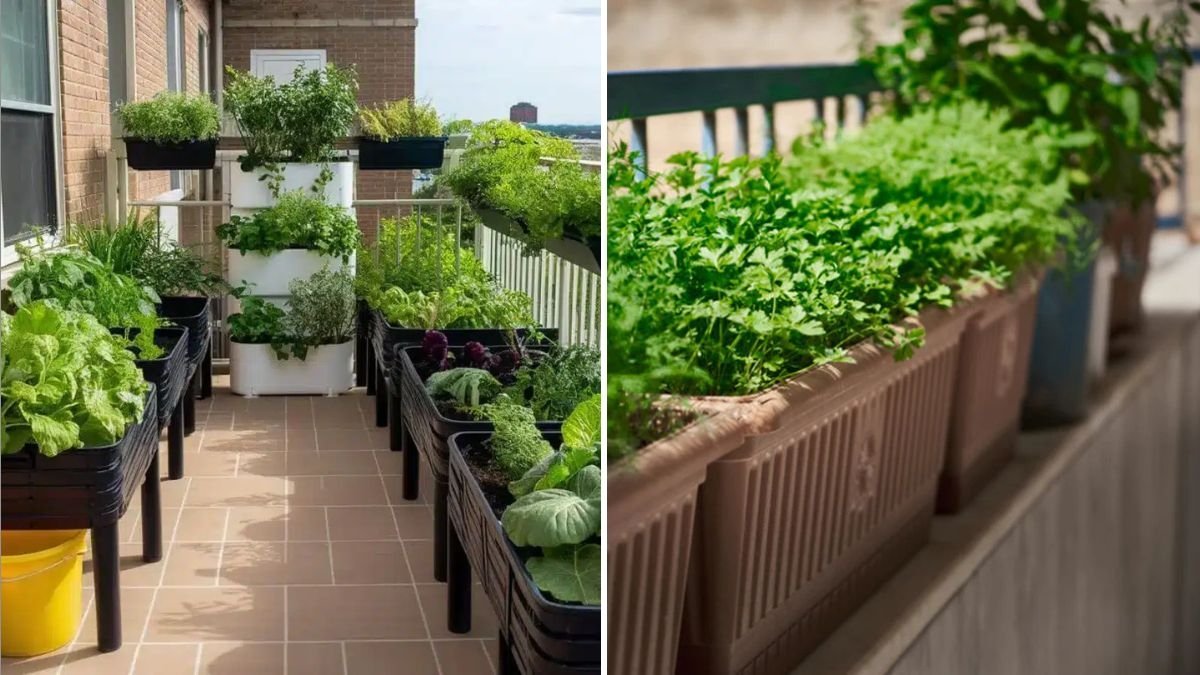



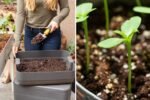

Leave A Comment